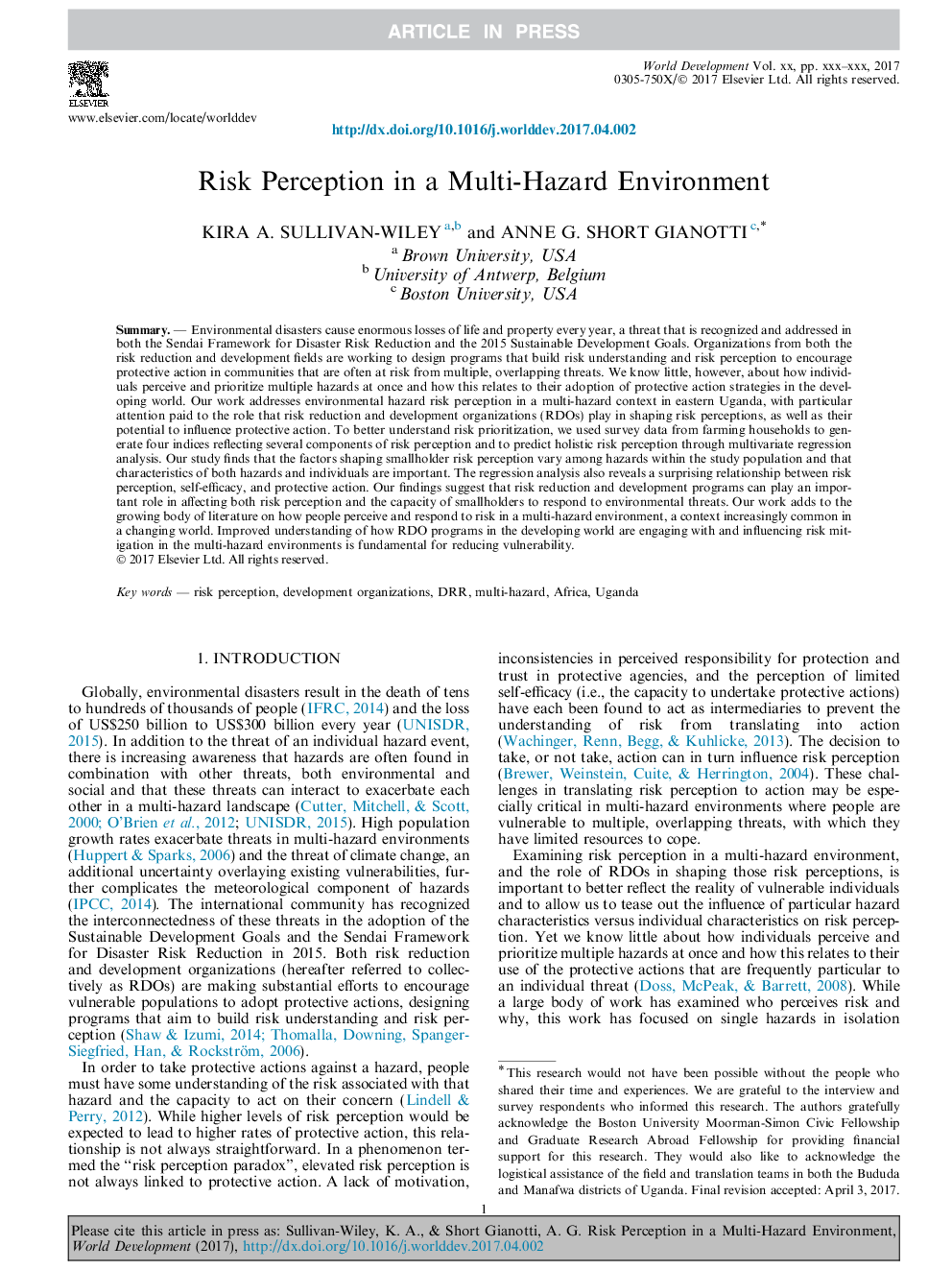ترجمه فارسی عنوان مقاله
درک مخاطره در محیط چندگانه
عنوان انگلیسی
Risk Perception in a Multi-Hazard Environment
| کد مقاله | سال انتشار | تعداد صفحات مقاله انگلیسی |
|---|---|---|
| 158611 | 2017 | 15 صفحه PDF |
منبع

Publisher : Elsevier - Science Direct (الزویر - ساینس دایرکت)
Journal : World Development, Volume 97, September 2017, Pages 138-152

